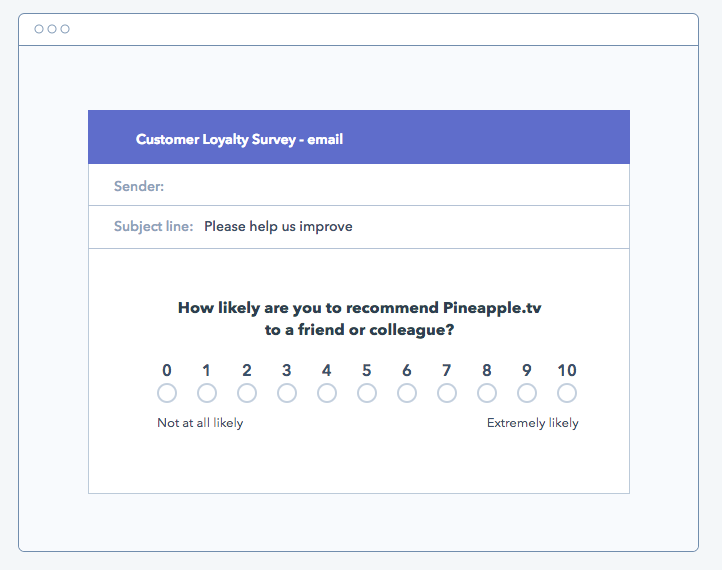
As a senior executive, you're aware that it costs significantly more to acquire new customers than it does to engage the ones that you already have. When evaluating your business growth strategy, highly-engaged customers should be a critical component of your plan. One of the most widely-used management tools for determining the readiness of your customer base to be activated in your growth strategy is the Net Promoter Score (NPS). Here's what you need to know about the Net Promoter Score and how it can be used to solve problems in raising awareness of your company.
What is NPS?
Created by the acclaimed business strategist Fred Reichheld in the early 2000s, the NPS is a tool that helps decision-makers gauge customer loyalty. It's used in customer experience management and marketing initiatives. It's also useful in increasing overall brand awareness and a leading indicator of sales growth. As time has gone on, it remains a vital tool in how people buy, even though so many other things in the buying process and customer experience have changed.
The premise of NPS is straightforward: it involves asking whether the customer would recommend your business to other people. It's not the same as an affiliate program where the customer actively helps sell your products, and doesn't require the intricate research and mechanisms involved in instituting a customer loyalty program. While those things can factor into a customer's likelihood of recommending your business, NPS is measured on a numeric scale of why they would or wouldn't recommend your company to someone they know.
Why is NPS Important?
Managers frequently overlook the likelihood of getting that customer recommendation, but they shouldn't be: Nielsen found that 90% of people trust their peers to make recommendations over making decisions based on ads or other forms of marketing. It stands to reason that customers who are happy with your brand will also be glad to recommend it to other people, and that degree of trust will be more likely to induce a purchase since they won't feel as though they're being sold.
To increase word of mouth buzz by using your existing customers, you should get an idea of how many people are likely to recommend your brand to their peers. The results of this testing may be indicative of areas where your business is excelling and where it needs work concerning both the customer experience and overall product quality.
How is NPS calculated?
Individual NPS runs on a scale of -100 to 100. Each response uses an 11-point scale with values ranging from 0 to 10. The higher the respondent's number, the more likely they are to recommend your business.

The respondents are segmented into three groups based on the numbers they gave, with more weight assigned to the lower values.
Promoters: They rate you at 9 or 10 and are very loyal and engaged, and the most likely to keep referring new customers.
Passives: They give a 7 or 8 rating because they may be satisfied with the experience, but are not that passionate about your brand and likely to go to a competitor if they have a better offer.
Detractors: All ratings 6 and below are dissatisfied customers that could put your brand at risk due to negative buzz, whether it's on social media or in person. If every single respondent is a promoter, your NPS is 100. If all of them are detractors, your score is -100.
How do you collect feedback from the NPS calculation process?
NPS calculation is typically an ongoing process aided by automated surveys through your company's customer service channels and post-purchase fulfillment, and isn't always static as a result. But once the responses are collected in a specified period, such as by the month, NPS is calculated by subtracting the percentage of detractors from promoters.
When Reichheld originally formulated NPS, he found that the average NPS across a sample of 400 companies was 16. With increasingly discerning customers strapped for time in the digital age, it's increasingly difficult to achieve very high NPS.

How to Gain Insights for NPS
NPS can serve as a core metric for evaluating your company's customer experience. With the customer experience being the primary differentiating factor for brands today, discovering the state of your NPS can undercover trends that can revolutionize your company. Insight from your NPS can stimulate further actions to improve the various areas of customer dissatisfaction.
NPS can also be used as a means to determine how engaged customers are and for using the score as an impetus to increase customer engagement. Why do some brands have highly engaged customers who are happy to tell other people about their experience, while others simply have customers that only place orders and don't do anything else? Just because a business has customers doesn't necessarily mean that they'll be excited about the brand or give their purchases much thought. NPS can provide additional insight on this.
Additionally, high levels of detractors could be indicative of needing to devote resources to reputation management. While you ultimately can't control what people say in person or online, you do have control over how your social media team diffuses situations with unhappy customers online. The negative buzz can also show areas where improvement is needed and even be an opportunity to make these customers happy -- publicly, no less.
How can NPS be used to grow your business?
A business is nothing without customers, and your existing customer base isn't just great news for your marketing efforts: it's also an underutilized tool in getting new customers.
Think about how small professional services rely so heavily on referrals: lawyers and accountants can spend money on advertising and content marketing, but the most effective way to get people to their offices is when someone gets a recommendation from a friend, family member, or colleague who they trust. Brands need to adopt the same mindset, but on an appropriate scale. NPS may not adequately address all aspects of the customer experience like user experience, product quality, and the quality of services received, but it does evaluate customer engagement and how it can be leveraged to get your customers to promote your business.
The customer may be king, but it is impossible to please everyone all the time. You will never attain a perfect NPS, where every customer is a promoter. Honestly, you don't even want everyone to be a promoter, as you'll gain some of the best insights from detractors. Understanding your Net Promoter Score is the foundation for improved customer experience which will, in turn, serve as the foundation for customer growth.

